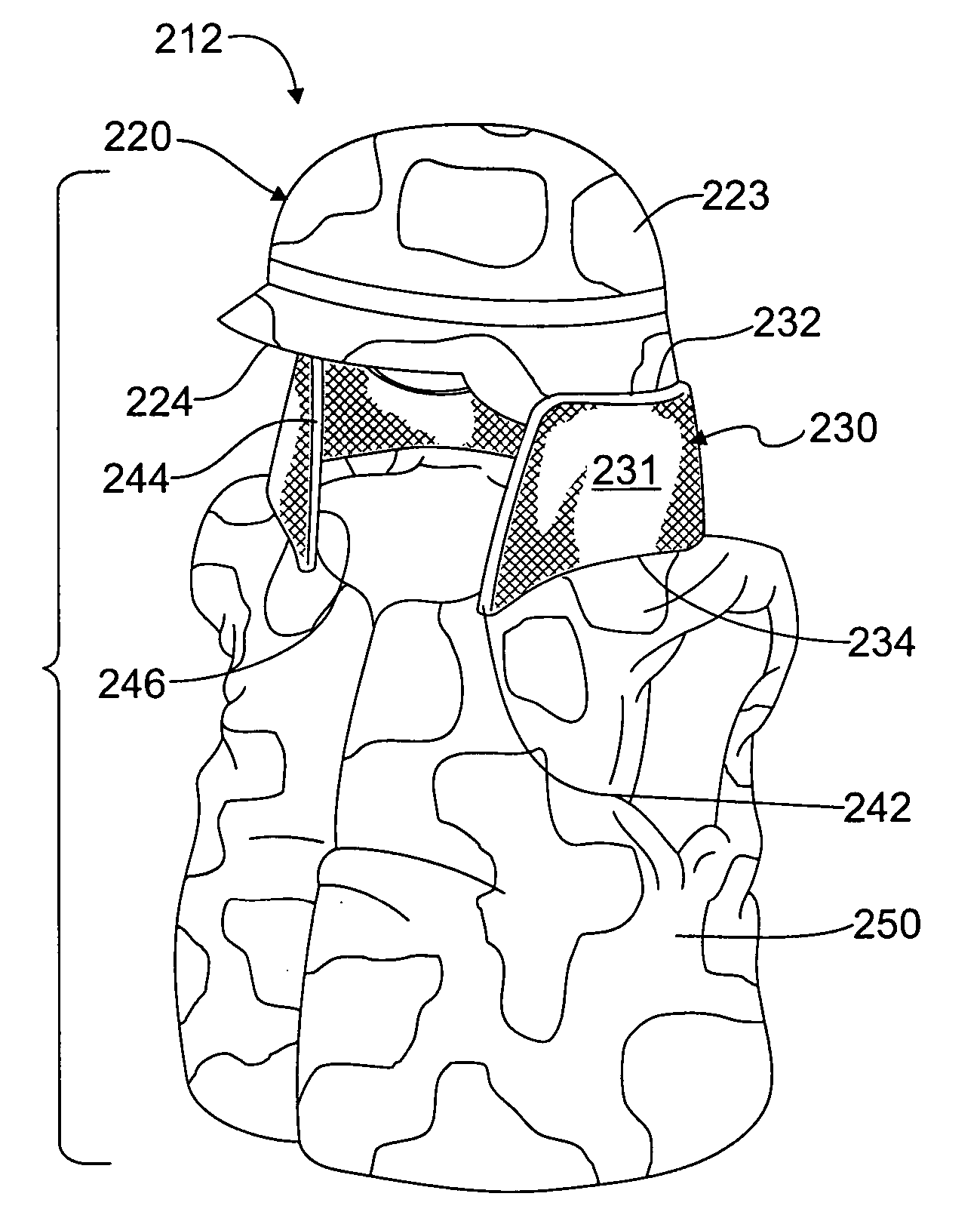Head and neck protection system
a head and neck protection and head and neck technology, applied in the field of safety equipment, can solve the problems of affecting the mobility of athletes, affecting the safety of protective gear, and often conflicting safety standards for protective gear,
- Summary
- Abstract
- Description
- Claims
- Application Information
AI Technical Summary
Benefits of technology
Problems solved by technology
Method used
Image
Examples
Embodiment Construction
[0021] Referring to the drawing figures, and in particular to FIG. 1, a head and neck protection system 12 is shown. The protection system 12 includes a head protector 20, a neck guard 30, and shoulder gear 50. The neck guard 30 is connected between the head protector 20 and the shoulder gear 50 to form a shock-absorbing brace between the head protector and shoulder gear that substantially prevents hyperextension of the neck, hyperflexion of the neck, and other serious head and neck injury. The neck guard 30 is sufficiently flexible and light-weight to permit normal head rotation about the axis of the wearer's neck.
[0022] The protective system 12 is intended for use in a variety of activities that involve risk of injury to the head, neck and spine. For example, the protective system 12 may be used in a variety of sports and recreational activities, including but not limited to football, auto racing, motorcycling, lacrosse, and equestrian competition. Therefore, the protective syste...
PUM
 Login to View More
Login to View More Abstract
Description
Claims
Application Information
 Login to View More
Login to View More - R&D
- Intellectual Property
- Life Sciences
- Materials
- Tech Scout
- Unparalleled Data Quality
- Higher Quality Content
- 60% Fewer Hallucinations
Browse by: Latest US Patents, China's latest patents, Technical Efficacy Thesaurus, Application Domain, Technology Topic, Popular Technical Reports.
© 2025 PatSnap. All rights reserved.Legal|Privacy policy|Modern Slavery Act Transparency Statement|Sitemap|About US| Contact US: help@patsnap.com



